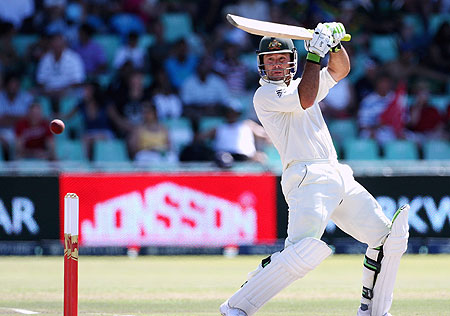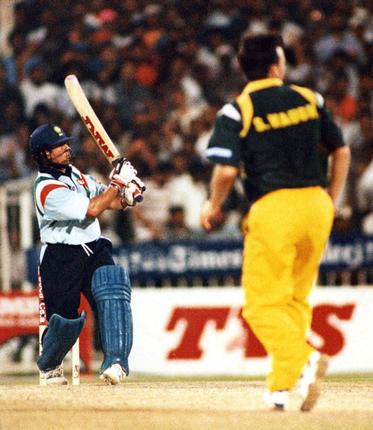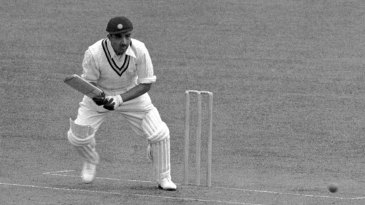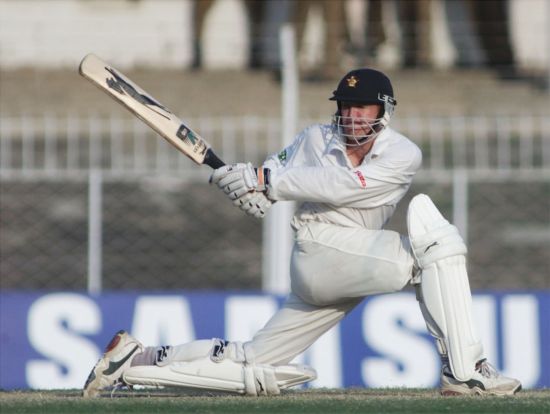CK Nayadu’s 153 (11 sixes included) vs the MCC in 1926, Lala Amarnath’s (and India’s) first test century vs England in 1933, Vijay Hazare’s scoring twin hundreds (145 & 116) vs Australia in 1948, Vinoo Mankad and Pankaj Roy’s 413 run opening stand vs New Zealand in 1956, Subhash Gupte’s (google who he is) 9-102 vs West Indies in 1959, Sunil Gavaskar’s aggregate 774 runs vs West Indies in 1971, Series wins in West Indies and England in 1971, India’s first win on Australian soil in 1977, Sunil Gavaskar crossing 10,000 test runs in 1987, Kapil Dev’s 432nd wicket in 1994, Anil Kumble’s 10-74 in 1999, VVS Laxman’s 281 in 2001, Rahul Dravid’s 233 in 2003/04, Sachin Tendulkar’s 35th test century in 2005, Anil Kumble’s 600th test wicket in 2008, Sachin Tendulkar crossing the 15,000 run mark in 2014.
Indian cricket’s faithful servants have conjured moments which have gone down in its history as path breaking, awe inspiring, and jaw dropping achievements. On the occasion of India playing its 500th test match, it is apt to have a look at how have its fortunes played out in the 84 years that India has been at the international stage.
The Lord’s in England played host to India’s first ever test match on June 25, 1932 vs England, a match India lost by 158 runs. It took India 20 years from this date, to register its first ever test win (vs England, 1952) and 36 years to register its first ever overseas series win (New Zealand, 1967/68).
While India’s domestic competitions were marked by insane run making feats/competitions (Vijay Merchant vs Vijay Hazare being the most prominent), things were a lot different on the international stage where not until the 1983 world cup triumph did India started to weigh itself favorably against all opposition and dispel the oft quoted joke that its batsmen had to be reminded that test matches were not timeless (justifiably so, India’s batsmen scored at 2.40 runs per over up until 1971, better only than Pakistan and New Zealand).
Of the 499 test matches that India has played so far, it has won 129, lost 157, drawn 212 and tied 1. India’s W/L ratio of 0.822 fifth worst in Test history (even below Sri Lanka). While this paints a fairly ordinary picture, it’s important to consider that of the 10 Indian cricketers who have played 100 test matches or more, 7 made their debut after 1989. The emergence of such prolific crop of cricketers has helped considerably improve the performance stats of Indian cricket since then, it’s W/ ratio has been the third best since both the 1990s and the 2000s, after Australia and South Africa respectively. Also, india has won 86 out of its 129 victories from 1990 onwards.
| Decade | Matches | Won | Lost | Tied | Drawn | W/L Ratio |
| 1930s | 7 | 0 | 5 | 0 | 2 | 0.000 |
| 1940s | 13 | 0 | 6 | 0 | 7 | 0.000 |
| 1950s | 44 | 6 | 17 | 0 | 21 | 0.353 |
| 1960s | 52 | 9 | 21 | 0 | 22 | 0.429 |
| 1970s | 64 | 17 | 19 | 0 | 28 | 0.895 |
| 1980s | 81 | 11 | 21 | 1 | 48 | 0.524 |
| 1990s | 69 | 18 | 20 | 0 | 31 | 0.900 |
| 2000s | 103 | 40 | 27 | 0 | 36 | 1.481 |
| 2010s | 66 | 28 | 21 | 0 | 17 | 1.333 |
| Total | 499 | 129 | 157 | 1 | 212 | 0.822 |
Table 1: Decade wise Performance Summary
Looking at India’s performance on a decade wise basis provides interesting insight into its performance over the years. Perhaps the most intriguing stat is India’s low W/L ratio in the 1990s, a decade which saw it emerging as the most formidable team to beat at home, but what offsets India’s unbelievable W/L ratio at home (3.4) is its dismal performance in away games (W.L Ratio: 0.07). Beginning form 2000 onwards was the most fulfilling period of Indian cricket when, under Saurav Ganguly’s captaincy, India began to dominate world cricket on the back of both its performance and commerce. The 2000s have also been the only decade where India’s overseas W/L ratio has been greater than or equal to 1.
| Decade | 1930s | 1940s | 1950s | 1960s | 1970s | 1980s | 1990s | 2000s | 2010s |
| Played | 3 | 5 | 25 | 36 | 34 | 42 | 30 | 47 | 26 |
| Won | 0 | 0 | 6 | 6 | 11 | 8 | 17 | 21 | 18 |
| Lost | 2 | 1 | 8 | 8 | 7 | 9 | 5 | 8 | 3 |
| Drawn | 1 | 4 | 11 | 22 | 16 | 24 | 8 | 18 | 5 |
| W/L Ratio | 0.00 | 0.00 | 0.75 | 0.75 | 1.57 | 0.89 | 3.40 | 2.63 | 6.00 |
Table 2: Performance Summary (Home Matches)
India’s subsequent decline in away performances from 2010 onwards is not a typically Indian trait, only 2 teams have had a W/L ratio of more than 1 during this period. Also, the W/L ratio in away matches in the ongoing decade for major test playing nations (excl. Zim and Ban) is .648, which the third worst for any decade after 1990s and 1980s. Filtering the period in consideration to start from 2013, the ratio plummets to.0.421, providing further fuel to the debate on doctoring pitches to gain an undue home advantage.
| Decade | 1930s | 1940s | 1950s | 1960s | 1970s | 1980s | 1990s | 2000s | 2010s |
| Played | 4 | 8 | 19 | 16 | 30 | 39 | 39 | 56 | 40 |
| Won | 0 | 0 | 0 | 3 | 6 | 3 | 1 | 19 | 10 |
| Lost | 3 | 5 | 9 | 13 | 12 | 12 | 15 | 19 | 18 |
| Drawn | 1 | 3 | 10 | 0 | 12 | 24 | 23 | 18 | 12 |
| W/L Ratio | 0.00 | 0.00 | 0.00 | 0.23 | 0.50 | 0.25 | 0.07 | 1.00 | 0.56 |
Table 3: Performance Summary (Away Matches)
In any case, what has been the defining feature of India’s performance overall is the gap between its performances at home and abroad, which was the narrowest in the ‘Ganguly Era’ (2000s). That was a decade when India registered match and series wins in Australia, England, West Indies, Pakistan and New Zealand. In fact, had the Sydney fiasco taken a different turn, the decade would have gone by as one where India didn’t lose any rubber outside of the sub-continent (Except New Zealand, 2002/03 and Pakistan 2006), the only such instant in its history.
This was also a decade where India’s famous batting line up was in its full bloom, and the results showed in the form of India registering scores of 400 plus more often than it did during any other decade (26% of total innings). Easier wickets and better batsmen offer part of the explanation for this number, but there can be no debate around the fact that the 2000s was a decade India achieved the most satisfying results across all performance indicators.
| Decade | 1930s | 1940s | 1950s | 1960s | 1970s | 1980s | 1990s | 2000s | 2010s |
| Total Innings (Away) | 8 | 15 | 37 | 32 | 56 | 68 | 66 | 100 | 75 |
| 400+ scores | 0 | 0 | 2 | 2 | 9 | 9 | 13 | 26 | 16 |
| % | 0% | 0% | 5% | 6% | 16% | 13% | 20% | 26% | 21% |
Table 4: 400+ innings score frequency.
At least uptil the emergence of Sunil Gavaskar, India’s chances in a match relied more on the wicket-taking ability of its famous spin quartet than on the run making ability of its Batsmen. This trend has seen a stunning reversal especially post the 1990s (as the table above indicates), and since then the dependability has been reversed.
Nevertheless, as most of you would agree, India has produced lesser number of ‘great’ bowlers than its rivals in international cricket (bar New Zealand, Sri Lanka), which is one of the reasons why India has not been able to win overseas on a consistent basis. Fancy this, amongst all Indian bowlers to have taken 200 test wickets, no bowler averages lower than Bishen Bedi’s 28.71. This is the highest (worst, that is!) average amongst all test playing nations, all of which have at least one bowler with an average of less than 23.
| Team | Bowler | Average |
| India | Bishen Bedi | 28.71 |
| South Africa | Dale Steyn | 22.24 |
| Australia | Glenn Mcgrath | 21.64 |
| West Indies | Malcolm Marshall | 20.94 |
| Sri Lanka | Muttiah Muralitharan | 22.72 |
| England | Fred Trueman | 21.57 |
| New Zealand | Richard Hadlee | 22.29 |
| Zimbabwe | Heath Streak | 28.14 |
| Pakistan | Imran Khan | 22.81 |
Table 5: Lowest Averaging Bowlers
One way to ascertain the extent of this dependability is to look at how better/worse off the batting and bowling averages been when compared to the overall averages in the said period. Taking a decade wise look at this trend just goes to prove the hypothesis stated above. There has only been one decade (1990s) where Indian bowlers conceded lesser number of runs than the average yield in that decade. Batting, on the other hand, has seen a tremendous reversal, from scoring terribly less than other batsmen in the 1930s (29%), Indian batsmen have gone ahead of the curve in the 1990s and 2000s. The number for the 2010s presents a challenge, as replacements for India’s retired stellar batsmen look to find their mark.
| Decade | 1930s | 1940s | 1950s | 1960s | 1970s | 1980s | 1990s | 2000s | 2010s |
| Overall | 32.15 | 35.34 | 28.54 | 32.10 | 31.90 | 32.09 | 33.75 | 34.10 | 31.51 |
| India | 38.40 | 46.67 | 35.09 | 34.14 | 33.40 | 36.39 | 33.46 | 34.98 | 34.32 |
| Factor | 19% | 32% | 23% | 6% | 5% | 13% | -1% | 3% | 9% |
Table 6: Decade wise bowling efficacy
| Decade | 1930s | 1940s | 1950s | 1960s | 1970s | 1980s | 1990s | 2000s | 2010s |
| Overall | 31.12 | 34.26 | 27.38 | 30.81 | 30.76 | 30.45 | 29.45 | 32.02 | 32.30 |
| India | 22.04 | 24.66 | 26.45 | 28.06 | 30.05 | 32.13 | 33.10 | 35.98 | 33.03 |
| Factor | -29% | -28% | -3% | -9% | -2% | 6% | 12% | 12% | 2% |
Table 7: Decade wise Batting efficacy.
If your average cricket fan is asked to name three of the greatest cricketers that India has produced over the years, the most probable names would be: Sunil Gavaskar, Kapil Dev and Sachin Tendulkar. Although Rahul Dravid might replace Gavaskar for the recently born follower, the question is unlikely to bring out any other names beyond these four people.
Without ever contesting he stature of the players named above, one should also concede that there have been many who have contributed significantly to India’s performances over the years. We shall now take a decade wise look at the most prolific and the most pivotal players in each of them.
For this exercise, I have followed a very simple arithmetic:
- Mentioned the most prolific batsman/bowler in a said decade.
- Calculate a prolificacy factor, arrived at by dividing his total runs by the number of runs of the next best.
- Calculate an efficacy factor, by dividing the average of the most prolific batsman/bowler by the next best.
- In case some other cricketer has a better batting/bowling average (considering a suitable cut-off), that average is considered as the benchmark.
- Multiply both the factors to arrive at an overall ‘Value Factor’.
A similar arithmetic has been followed to calculate the value factor for performance in wins, to give a balanced/alternate view of performance value.
Higher the value factor for a player during any decade would mean that the team’s fortunes depended more on his shoulders than anyone else. A high value factor would likely have an adverse effect on the team’s W/L ratio (though it hasn’t been tested).
The table brings out names that won’t surprise many, those who follow the game would have known that Sachin Tendulkar, Rahul Dravid and Sunil Gavaskar’s name to come up as the most prolific batsmen in their respective decades. What the table demonstrated is the extent to which, these batsmen were better than the next best. From the 1940s onwards, Vijay Hazare, with a factor of 1.58, has been the most prolific batsmen in any decade, followed by Sachin Tendulkar (1.55-1990s) and Sunil Gavaskar (1.22-1970s). Sachin Tendulkar’s score seems all the more remarkable because more players than ever were having an extended run. Rahul Dravid’s factor is also remarkable given the talent around in that decade, and his ability to outshine them is a testament to his value and genius.
| Decade | Player Name | Mtchs | Runs | Avg | Following Batsman | Runs | Best/Next Best Average | Avg | Prolificacy Factor | Efficacy Factor | Value Factor |
| 1930s | V.Merchant | 6 | 460 | 38.33 | CK Nayadu | 350 | D.Hussain | 42.33 | 1.31 | 0.91 | 1.19 |
| 1940s | V.Hazare | 13 | 1095 | 49.77 | R. Modi | 695 | R.Modi | 49.78 | 1.58 | 1.00 | 1.58 |
| 1950s | P.Umrigar | 43 | 2520 | 39.38 | P. Roy | 2280 | V.Hazare | 45.7 | 1.11 | 0.86 | 0.95 |
| 1960s | C.Borde | 45 | 2562 | 37.13 | MAK Pataudi | 2552 | P.Umrigar | 51.47 | 1.00 | 0.72 | 0.72 |
| 1970s | S.Gavaskar | 60 | 5647 | 55.91 | G. Vishwanath | 4611 | S.Gavaskar | 55.91 | 1.22 | 1.00 | 1.22 |
| 1980s | D.Vengsarkar | 71 | 4501 | 46.89 | S. Gavaskar | 4475 | M.Amarnath | 47.73 | 1.01 | 0.98 | 0.99 |
| 1990s | S.Tendulkar | 69 | 5626 | 58.00 | M. Azharuddin | 3880 | V.Kambli | 54.20 | 1.45 | 1.07 | 1.55 |
| 2000s | R.Dravid | 102 | 8535 | 55.42 | S.Tendulkar | 7129 | G.Gambhir | 56.73 | 1.20 | 0.98 | 1.17 |
| 2010s | V.Kohli | 45 | 3245 | 45.07 | S.Tendulkar | 2951 | S.Tendulkar | 50.01 | 1.10 | 0.90 | 0.99 |
Table 8: Batsman Value (All Matches)
If the bowling table brings out one stunning statistic, it is that for Kapil Dev in the 1980s, not only was Kapil Dev carrying the entire bowling on his shoulders, he was doing with an effect that none of the Indian bowlers have even come close to. His factor of 2.17 is followed by Anil Kumble (1.75-1990s) and Erapalli Prasanna (1.38-1960s). India’s low W/L ratio during the 1980s and 1960s (0.524 and 0.429) is a likely outcome of it’s over dependence on one star performer.
| Decade | Player Name | Mtchs | Wkts | Ave | Following Bowler | Wkts | Bowler | Avg | Wkts Factor | Ave Factor | Overall Factor |
| 1930s | Amar Singh | 7 | 28 | 30.64 | M.Nisar | 25 | M.Nisar | 28.25 | 1.12 | 0.92 | 1.03 |
| 1940s | V.Mankad | 13 | 40 | 41.65 | L.Amarnath | 29 | D.Phadkar | 30.22 | 1.38 | 0.73 | 1.00 |
| 1950s | S.Gupte | 31 | 134 | 29.13 | V.Mankad | 122 | G.Ahmed | 28.18 | 1.10 | 0.97 | 1.06 |
| 1960s | E.Prasanna | 22 | 113 | 27.05 | B.Nandkarni | 76 | S.V’Raghavan | 25.17 | 1.49 | 0.93 | 1.38 |
| 1970s | B.Bedi | 48 | 196 | 29.79 | B.C’Shekhar | 180 | Kapil Dev | 27.73 | 1.09 | 0.93 | 1.01 |
| 1980s | Kapil Dev | 80 | 272 | 29.54 | R.Shastri | 141 | R.Binny | 33.28 | 1.93 | 1.13 | 2.17 |
| 1990s | A.Kumble | 58 | 264 | 27.81 | J.Srinath | 162 | V.Raju | 29.79 | 1.63 | 1.07 | 1.75 |
| 2000s | A.Kumble | 74 | 355 | 31.03 | H.Singh | 322 | H.Singh | 30.31 | 1.10 | 0.98 | 1.08 |
| 2010s | R Ashwin | 36 | 193 | 25.20 | I.Sharma | 155 | R.Jadeja | 23.71 | 1.25 | 0.94 | 1.17 |
Table 9: Bowler Value (All Matches)
The table for wins has some interesting names topping their decades as the most valuable match-winners. Vinoo Mankad replaces Polly Umrigar has the most vital match winner of the 1950s, Umrigar, in turn replaces Chandu Borde as the match winner of the ‘60s. Gundappa Vishwanath replaces Sunil Gavaskar in the 1970s, and Cheteshwar Pujara replaces Virat Kohli in the 2010s.
None of Gundappa Viswanath’s 14 test centuries were in a losing cause, his replacing Gavaskar shouldn’t be any surprise to those who know this fact. There is a strong case for Dilip Vengsarkar to be counted in the same breath as Gavaskar as well since it was solely on his back that India was winning matches in the 1980s (2.65), briefly during which he was also the most prolific batsman in the world. Sachin Tendulkar had the company of Mohammad Azharuddin and Vinod Kambli as pivotal match-winners which reduced his overall value and similar is the case with Cheteshwar Pujara (2010s).
Rahul Dravid’s claim as the momentum changing batsman during the 2000s gets a string boost as he emerges with a high value factor (1.20) especially when seen in the light of the fact that there were other great names (Tendulkar, Laxman, Sehwag) in the fray.
| Decade | Player Name | Mtchs | Runs | Ave | Following Batsman | Runs | Best/Next Best Average | Avg | Prolificacy Factor | Efficacy Factor | Value Factor |
| 1950s | V.Mankad | 5 | 563 | 112.6 | P.Umrigar | 371 | V.Hazare | 121 | 1.52 | 0.93 | 1.41 |
| 1960s | MAK Pataudi | 9 | 705 | 44.1 | A.Wadekar | 507 | A.Wadekar | 63 | 1.39 | 0.70 | 0.97 |
| 1970s | G.Viswanath | 16 | 1359 | 50.3 | S.Gavaskar | 1124 | S.Gavaskar | 45 | 1.21 | 1.12 | 1.35 |
| 1980s | D.Vengsarkar | 10 | 895 | 74.6 | S.Gavaskar | 547 | M.Amarnath | 46 | 1.64 | 1.62 | 2.65 |
| 1990s | S.Tendulkar | 18 | 1362 | 59.2 | M.Azharuddin | 1336 | V.Kambli | 74 | 1.02 | 0.80 | 0.82 |
| 2000s | R.Dravid | 39 | 3810 | 74.7 | S.Tendulkar | 3163 | R.Dravid | 75 | 1.20 | 1.00 | 1.20 |
| 2010s | C.Pujara | 17 | 1551 | 64.6 | S.Tendulkar | 1421 | VVS Laxman | 94 | 1.09 | 0.69 | 0.75 |
Table 10: Batsman Value (Wins)
| Overall | Player Name | Mtchs | Wkts | Ave | Following Bowler | Wkts | Bowler | Avg | Wkts Factor | Ave Factor | Overall Factor |
| 1950s | V.Mankad | 5 | 41 | 13.32 | S.Gupte | 22 | Jasu Patel | 11.94 | 1.86 | 0.90 | 1.67 |
| 1960s | E.Prasanna | 6 | 40 | 17.83 | B.Bedi | 25 | B.Nandkarni | 14.00 | 1.60 | 0.79 | 1.26 |
| 1970s | B.C’Shekhar | 12 | 86 | 18.31 | B.Bedi | 72 | E.Prasanna | 17.41 | 1.19 | 0.95 | 1.14 |
| 1980s | Kapil Dev | 11 | 49 | 18.0 | N.Hirwani | 29 | M.Singh | 11.25 | 1.69 | 0.63 | 1.06 |
| 1990s | A.Kumble | 17 | 126 | 17.05 | V.Raju | 57 | J.Srinath | 18.38 | 2.21 | 1.08 | 2.38 |
| 2000s | H.Singh | 31 | 175 | 21.55 | A.Kumble | 162 | A.Kumble | 20.07 | 1.08 | 0.93 | 1.01 |
| 2010s | R Ashwin | 18 | 124 | 18.20 | P.Ojha | 78 | R.Jadeja | 15.59 | 1.59 | 0.86 | 1.36 |
Table 11: Bowler Value (Wins)
The bowler charts corroborates the claim Anil Kumble has as the biggest match-winner of the 1990s, his exploits on home surfaces are a stuff of legend and his factor brings it out clearly given that India registered all but 1 of its wins during this period at home. Ravi Ashwin’s exploits at home and against relatively weaker opposition like West Indies has catapulted his numbers (conventional and derived) into the elite league. But a win is a win isn’t it, and winning against weaker opposition is also a characteristic of a strong team.
India has come a long way since Lala Amarath registered the first test century by an Indian, its players have broken records, ripped bowling attacks apart and defied them to the brink of them feeling like ripping their gear apart in frustration. While India has established an undeniable reputation as a cricket superpower, it is yet to tick some pivotal boxes which would springboard it as a formidable force wherever it tours/travels.
But for now, lets celebrate those who have helped us believe in a future of such daring expectations.



















